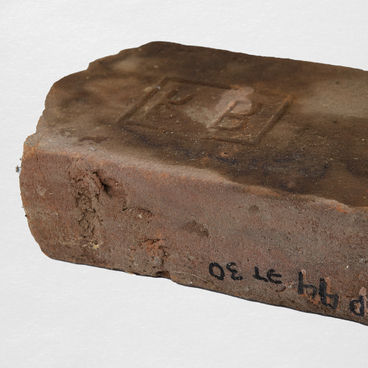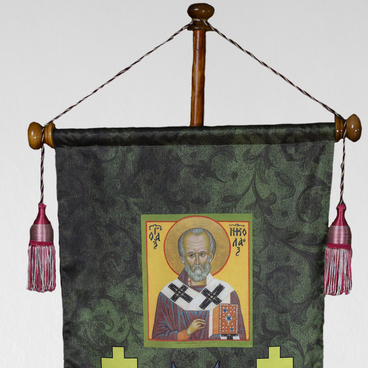To the historian Sergey Biryukov’s knowledge, the Starodubye region, where the city of Pogar was located, was one of the largest centers of hot-glassblowing. There was a fair amount of raw materials, such as sand, silica, and fuelwood.
Mold-blown (gutnoye) glass is a product formed by craftsmen manually from the hot glass straight away after melting. They blow vessels without molds or draw up figures of different shapes out of the bulk glass with pliers.
The name of the glass was originated from the handicraft workshop’s name “guta”. The word “guta” was borrowed from the Old High German “hutta”, i.e. a room with a furnace, in which glass was melted and glassware was blown out. The gutas could have various production capacities and consist of one, two, or three-layer furnaces. The first layer was occupied by a firepot. There were a number of refractory ceramic vessels for glass melting on the second layer. Glassblowers cooled down the finished products on the upper layer.
In the 18th century, the gutas of the left-bank Dnieper River region supplied not only the local market. Bottles, glasses, and decorative arrangements of glass were delivered to Moscow and the neighboring countries. Both products and glassblowers were in demand. People from Starodub and Pogar worked at the large Russian glass-blowing factories.
The archeological finds suggest that Starodubye glassblowing existed even in the Kievan Rus period. It was the time of general development of the Belarusian, Ukrainian, and Russian cultures. Several glass-making workshops from back then were discovered, with one of them located on the Kyiv-Pechersk Lavra territory.
The glass workshops or gutas were first mentioned in the 15th century. The whole Ukraine and forest regions of Russia were engaged in glassmaking. There are many settlement names still entailing the word ‘guta’ (hutta) on the territory of the modern Bryansk region: Guta-Muravinka, Staraya Guta, Guta-Koretskaya. In the 17th — 18th centuries, the residents of the settlements were engaged in glassmaking. Mass expansion of glassblowing production at the end of the 18th century resulted in the large-scale deforestation. Therefore, the tsarist government had to restrict deforestation by special decrees.
Mold-blown (gutnoye) glass is a product formed by craftsmen manually from the hot glass straight away after melting. They blow vessels without molds or draw up figures of different shapes out of the bulk glass with pliers.
The name of the glass was originated from the handicraft workshop’s name “guta”. The word “guta” was borrowed from the Old High German “hutta”, i.e. a room with a furnace, in which glass was melted and glassware was blown out. The gutas could have various production capacities and consist of one, two, or three-layer furnaces. The first layer was occupied by a firepot. There were a number of refractory ceramic vessels for glass melting on the second layer. Glassblowers cooled down the finished products on the upper layer.
In the 18th century, the gutas of the left-bank Dnieper River region supplied not only the local market. Bottles, glasses, and decorative arrangements of glass were delivered to Moscow and the neighboring countries. Both products and glassblowers were in demand. People from Starodub and Pogar worked at the large Russian glass-blowing factories.
The archeological finds suggest that Starodubye glassblowing existed even in the Kievan Rus period. It was the time of general development of the Belarusian, Ukrainian, and Russian cultures. Several glass-making workshops from back then were discovered, with one of them located on the Kyiv-Pechersk Lavra territory.
The glass workshops or gutas were first mentioned in the 15th century. The whole Ukraine and forest regions of Russia were engaged in glassmaking. There are many settlement names still entailing the word ‘guta’ (hutta) on the territory of the modern Bryansk region: Guta-Muravinka, Staraya Guta, Guta-Koretskaya. In the 17th — 18th centuries, the residents of the settlements were engaged in glassmaking. Mass expansion of glassblowing production at the end of the 18th century resulted in the large-scale deforestation. Therefore, the tsarist government had to restrict deforestation by special decrees.



